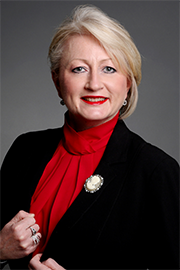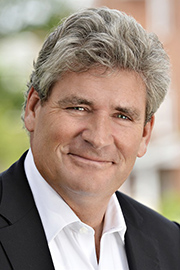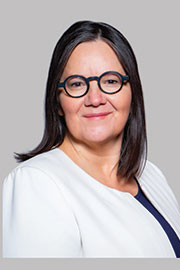- Hear!
- Rabble!
- Feb/28/24 3:30:00 p.m.
- Re: Bill 162
When I was there in Kitchener and Waterloo, I heard loud and clear how much they wanted Highway 7 and how important it was and, in fact, their disappointment with the members from Kitchener-Waterloo from the NDP who haven’t supported our budgets that have made the necessary investments to ensure that we could get to this point and continue to build Highway 7. So I hope the member from Waterloo supports and listens to her constituents in building Highway 7 for the people of Waterloo, Guelph and Cambridge because it’s important for that.
See, I’ve actually spent time in that area as well, Speaker, whether I used to live there and work there, went to school there, and I recognize how important this project is for those people. So I hope the NDP come to their senses on this. Listen to the people, reduce gridlock and actually support investments into areas like Waterloo and Kitchener—
Interjection.
Speaker, that’s also why we’re investing over $80 billion in the next decade to transform public transit in our province. In 2020, our government brought forward the Building Transit Faster Act—
Interjections.
But, look, we’re building one of the largest public transit expansions in the world right here in Ontario. The Kitchener GO line is a prime example of that. We’re extending GO service into Bowmanville. We’re extending GO rail into the Niagara region. I’m looking just across the aisle here at the members from the NDP and I see the GO rail transit and investments we’re making into some of their areas, so I do hope they support this piece of legislation that is actually going to get services even better for their areas to get commuters to and from where they need to get to in a quicker manner. I think it’s really important that they do that, because it would be very disappointing, I think, if they went back and knocked on doors and their residents heard that they voted against more service on the Kitchener GO line, that they voted against new transit stations in Bowmanville. I really hope they don’t do that.
I actually really hope that they support this piece of legislation, the Get It Done Act, so we can get shovels in the ground quicker. But you know what? I’ve seen them vote against building transit acts in this Legislature before that actually allowed us to get shovels in the ground on the Ontario Line much quicker. It helped us streamline and accelerate the construction of critical transit projects.
But I’m also proud that, in this piece of legislation, we’re declaring the Hazel McCallion Line extensions into the Mississauga loop and downtown Brampton a priority transit project. This will allow us to expand this critical project as quickly as possible, because the people of Brampton and Mississauga need better transit and this government is going to deliver on that. They are also two of Canada’s quickest-growing cities—with faster, more frequent and reliable services that this LRT will deliver.
We have already designated the Ontario Line, the Yonge North subway extension, the Scarborough subway extension, the Eglinton Crosstown West extension and Hamilton LRT as priority transit projects under the building faster acts, and this Hazel McCallion LRT will be another part of it, if passed, in this piece of legislation. I hope the members opposite appreciate how important it is to build transit fast for residents across Ontario and get their support on this.
We’re actually also calling on the federal government to agree to a cost-sharing partnership to help deliver better two-way, all-day GO rail service along the Milton GO rail corridor, one of the busiest lines on the GO network. This would mean more trains, less waiting and faster service across our GO network. We are focused on practical solutions that put money back in the pocket of transit riders and also help us support better options for people commuting across Ontario.
Madam Speaker, unlike previous governments, under the leadership of Premier Ford, we’re getting shovels in the ground and getting it done faster than ever before, building a world-class transit network that will better connect communities across the greater Golden Horseshoe for generations to come.
Putting the Building Transit Faster Act to use is just one example of how our government is taking action to build priority projects faster. We are also committed to building at least 1.5 million new homes by 2031, but we can’t achieve that goal without giving our municipal partners the support they need to build a stronger Ontario for everyone. We need to work together collectively, and that’s exactly what our government is doing. As part of the Get It Done Act, our government is proposing changes that will allow us to get shovels in the ground faster on new housing projects for cities across this province.
Speaking of the future, make no mistake: The future is electric in Ontario. In the past three years, Ontario has attracted over $28 billion in new investments in vehicle manufacturing and the EV supply chain. These investments are creating thousands of well-paying jobs that fuel our economy, connecting the next generation of people to good jobs, six-figure salaries and a better life, not to mention the impact the transition to electric will have in slashing our carbon emissions.
Madam Speaker, as more drivers go electric, the critical minerals in northern Ontario have never been more valuable. That is why our government is ensuring Ontario’s mining sector remains competitive and attractive to investors. As part of the Get It Done Act, we’ll explore options for improving permitting processes for mine development and operations in Ontario—
We’re putting an end to inefficiencies to make Ontario a world leader in the mining sector. Just as we can’t have millions of people stuck in gridlock, we can’t have multi-million dollar investments in our mining sector caught up in red tape. Identifying and eliminating regulatory duplication and delays will ensure that the mining sector is positioned to thrive in Ontario for years to come. This will revitalize our mining sector, building on the incredible work done by our Minister of Mines, and create thousands more well-paying jobs. With the Get It Done Act, we’ll cement our position as a world leader in the mining and electric vehicle sectors. By taking these steps, we’re making Ontario more attractive to investors, giving our economy a much-needed boost and getting it done for the people of this province, particularly northern Ontario.
Since day one, our government has made affordability our number one priority for the people of Ontario. Now more than ever, we need policies that help Ontario families keep more of their hard-earned money and give them the confidence they need to keep their money. That is why the Get It Done Act would amend the Public Transportation and Highway Improvement Act to ban any new provincial tolls on highways. This would not only apply to the Don Valley Parkway and the Gardiner Expressway once both highways are uploaded to the province, but also to the province’s 400-series highways.
Any future government would be required to conduct public consultations before enacting new tolls, because the public has a right to know if the government is going to enact tolls that can cost up to $5,000 a year, as we are seeing in many other jurisdictions. Madam Speaker, we know Bonnie Crombie and the Liberals, as well as the opposition, love nothing more than new taxes.
It’s not only the families that benefit from fewer tolls; tolls add to the price of commercial goods, and that cost is then reflected in the prices that we see on store shelves. Hard-working Ontario families deserve better than that, Madam Speaker.
Preventing new tolls on provincial highways will connect communities across our province, making jobs more accessible and driving our economy.
We know from experience that making highways toll-free provides significant savings for Ontarians. In April 2022, we eliminated tolls on Highway 412 and Highway 418, a move that will save drivers $68 million between 2022 and 2027. By introducing this piece of legislation to ban any new tolls on provincial highways, we’re going a step further to make sure life stays affordable. Our government will always put taxpayers first.
With the Get It Done Act, we’re introducing legislation that will make the current freeze on driver’s licence and Ontario photo card fees permanent. Our freeze has saved Ontarians $22 million since 2019 and will save drivers $66 million more this decade. Any future fee increases would require a legislative amendment. By making it more difficult to hike fees in the future, we’re protecting people’s wallets today and keeping costs down for years to come.
Our focus is not just on saving drivers more of their hard-earned money. In 2022, our government announced we are eliminating the licence plate renewal fees, saving vehicle owners up to $120 per year on a car or truck. If passed, starting this summer, we will be automating the licence plate renewal process, which will help save vehicle owners more than 900,000 hours each year.
Automatic renewals will only be available to drivers in good standing who are insured and do not have outstanding tickets or penalties, and municipalities will still be able to use the renewal process to collect outstanding fees and fines. Those not considered in good standing will be notified 90 days before their licence plate expires to ensure they have time to comply. Automated plate renewals will apply to cars and passenger vehicles, light-duty trucks, motorcycles and mopeds, and will save more than eight million Ontario drivers time every single year.
We’re also taking action to protect Ontarians by making it more difficult for provincial governments to introduce new carbon pricing measures. If passed, the Get It Done Act would require a referendum to be held before any new carbon pricing regime could be introduced in Ontario. This would not only cover carbon taxes, but other forms of carbon pricing such as the cap-and-trade system that we got rid of. As many Ontarians struggle to make ends meet, now is not the time for the government to raid people’s wallets by putting a price on carbon. This is why the Premier and the Minister of Finance will continue to call on the government of Canada to remove the federal carbon tax.
I shared a story earlier talking about some of the truck drivers. For long-haul truck drivers, the carbon tax costs them close to $15,000 to $20,000 a year. This act will help protect our hard-working truck drivers from inducing additional costs of taxes.
We know that carbon taxes impact families and impact the bottom line for many in this province. We know that more taxes on their heating and more taxes at the pumps are detrimental to the success of those in this province. Our government will always help people keep more of their hard-earned money, and we will continue to introduce measures that will give them the confidence to do just that.
I also want to speak about the ability to accelerate construction for key infrastructure investments, to get shovels in the ground sooner and save taxpayer dollars. Not only are we making life more affordable for millions of Ontarians by removing unnecessary fees and preventing new tolls on provincial highways; we are helping alleviate gridlock. We are supporting economic growth, keeping goods and people moving as we build new highways, transit, roads and bridges across this province, and it will help us achieve our plan to build at least 1.5 million new homes across the province by 2031.
Now more than ever we need to cut red tape so we can prepare for Ontario’s growing population. We need to help families keep their money so they can deal with the cost of living and make ends meet. It’s proof of our government’s commitment to always get it done, and I hope the members opposite—the Liberals, NDP and Green—support this piece of legislation.
With that, Madam Speaker, I would now like to pass it over to my colleague and good friend the Associate Minister of Transportation.
- Hear!
- Rabble!
- Feb/28/24 3:40:00 p.m.
- Re: Bill 162
Thank you, Madam Speaker, and thanks to Minister Sarkaria for his leadership on this file.
As we get ready to welcome millions of newcomers to our province this year, the need to build new infrastructure has never been more urgent. At a time when many families feel they are struggling to get ahead, we need to take action to make life more affordable for people and, of course, for businesses. The Get It Done Act gives us the tools to build quicker while keeping more Ontarians’ hard-earned money in their pockets where it belongs. It’s time to get it done for the people of Ontario, and that’s exactly what this act, the Get It Done Act, will do.
That’s why our government plans to use the Building Transit Faster Act to designate the Hazel McCallion Line extension as a priority transit project. This will allow us to build these much-needed extensions into downtown Mississauga, as well as downtown Brampton much faster, connecting communities throughout the GTA area and expanding access to jobs and other opportunities throughout the region.
But that’s not all we are doing. To transform public transit fully in our province, we are investing $80 billion over next 10 years to build a world-class transit network for all Ontarians, and this starts with making transit more accessible and also, Madam Speaker, more affordable.
Our government is on a mission to keep costs down for the hard-working people of Ontario. We just launched one fare this Monday with a new program fully funded by our government. Commuters will only need to pay once when they’re transferring between GO Transit, the TTC and other transit agencies across the GTHA. At a time when people across this province feel like they’re struggling to get ahead, putting money back into people’s pockets is the right thing to do, and that’s exactly what our government is doing, Madam Speaker. One fare will save commuters an average of $1,600 a year.
Interjections.
We know that more than 500,000 post-secondary students in the GTA use public transit for daily travel with many spending upwards of $400 a month. A student should not have to skip a class because they can’t afford a bus pass. People should not have to miss out on big appointments or any big moment or the next job interview because of the price of the transit that they’re taking every single day. That’s why one fare is a game-changer for anyone who takes transit in the GTHA. That’s part of our plan to make life more affordable.
Madam Speaker, right after my graduation, one of my first jobs was in Mississauga. I had been commuting from Scarborough to Mississauga every single day, from Kennedy to Kipling, and from Kipling, I would take the TTC to Mississauga, get off and get onto MiWay and pay an extra fare. I understand the struggle, and Minister Sarkaria understands the struggle. The Premier and this caucus understand the struggle.
That’s why our government is fully funding the one-fare program so that we can enable affordable transportation—not just for students, for workers, for daily commuters, as well as seniors. With one fare, our government is saving people time and money and making life easier for transit riders, and we will continue to do just that with this bill that we are debating today. The Get It Done Act will make it easier to get shovels in the ground on priority projects and build transit-oriented communities for the future.
We are working each and every day to make transit better and more accessible. Of course, by having this infrastructure and affordability, we are giving transit riders more choice, breaking down financial and accessibility barriers to take trains, to take buses and streetcars. That’s what we have done with one fare, and that’s exactly what we are trying to do with this act, Madam Speaker.
That is why we’re launching open payment. Moving forward, people can pay for public transit not just through Presto, but also through debit cards and credit cards, on GO Transit, on UP Express and TTC. If they forgot their Presto card, not a problem at all. If they forgot their card at home, if they forgot to load their funds on the card, they don’t have to worry. They can just tap on the credit card or debit card they have. And riders can now tap on their smart watch and mobile wallet as well, Madam Speaker. As I mentioned, we are providing more options and more choices, and our transit network will only get better if this act, the Get It Done Act, passes.
It’s no secret that our province is growing exponentially each year, with more than 500,000 newcomers landing here every single year, Madam Speaker. They come here for a better life and to contribute to our economy, but they’re often met with gridlock every single day. That’s why our government is investing in transit infrastructure in every corner of our province, because we know transit keeps people moving and is a key driver for economic growth.
Madam Speaker, we are not only connecting people to jobs but also connecting them to their family, friends, medical appointments, school and so much more. As our population continues to grow, we need to keep our transit system on check and also to keep it at the same pace as possible. That is why we are using every tool in our tool box to prioritize transit projects and build them as quickly as possible, and that’s why this act, the Get It Done Act, will be very crucial for giving Ontarians the transit network they need and they deserve for generations to come.
In fact, shovels are already in the ground to build new subways; for example, the Ontario Line. This is a monumental project, Madam Speaker. With 15 new subway stations, the Ontario Line will accommodate up to 40 trains per hour, nearly 400,000 new riders per day. That is a massive impact on people’s life every single day right here in Ontario. And wait times for a train will be as short as 90 seconds. We are putting thousands more Toronto residents within walking distance of public transit and expanding people’s access to jobs and other life-changing opportunities. And we are reducing crowds at some of the TTC’s busiest stations in the nation. Contracts have already been given and awarded for building the southern portion of this project, the Ontario Line project, and the Pape tunnel and underground stations—also, the elevated guideway and station contracts has awarded to date. Our government recognizes the importance of building transit that will connect communities and create new travel options for people across the greater Toronto area. That’s why we aren’t wasting any time getting the Ontario Line built, and that’s why we are looking to accelerate the construction on the critical transit projects with the Get It Done Act.
Madam Speaker, we are working on the Yonge North subway extension, which will extend the TTC’s Line 1 subway by approximately eight kilometres into Richmond Hill. The Yonge North subway extension will accommodate more than 94,000 daily trips, offering commuters convenient and accessible connections to local transit services and GO Transit. The extension will put 26,000 more people within walking distance of public transit and save commuters at least 40 minutes a day. They can spend that time with their loved ones rather than sitting in the car in gridlock, Madam Speaker. We are well on our way to reducing that congestion, that gridlock, connecting people to more jobs and making travel between York region and Toronto easier than ever before. And we aren’t stopping there.
Commuters in Scarborough deserve the same access to fast and reliable public transit as commuters here in downtown Toronto. That’s why our government is building the Scarborough subway extension, which will add three stops and almost eight kilometres of track to the TTC’s Line 2 subway. The Scarborough subway extension will offer commuters connections to GO Transit and Durham Region Transit as part of our plan to make the GTA one of the most integrated transit networks in North America. And that is not all; we have other priority transit projects on the go, including the Eglinton Crosstown west extension and the Hamilton LRT project.
Our government is serious about building transit and we are serious about expanding transit projects for commuters in Mississauga, Brampton, Milton and across the province as quickly as possible. The Get It Done Act will help us do just that, and we are getting shovels in the ground quicker than ever before in history, and which we’ll now be able to do for the new Hazel McCallion Line extensions, as well.
I’m sure everyone in this room can relate to the frustration of gridlock. It prevents people from getting to work and other priorities on time, draining our productivity. It leaves commercial goods stuck in transit, which makes prices rise even higher for families. Madam Speaker, the solution to these problems is twofold: We need to take immediate action to build the infrastructure we need to support our growing population before the gridlock gets even worse, and we need to do everything in our power to make life more affordable when so many Ontarians are struggling. The Get It Done Act is the answer to solving these problems, and it’s the only way we will achieve our goals of building a stronger Ontario for everyone.
It’s critical we get shovels in the ground to build the new public transit and the highways, roads and bridges that will fuel our economy for generations to come. We need to put money back in families’ pockets by freezing fee increases and making sure no new tolls are added on provincial highways. We need to streamline our environmental assessment process so priority projects are not derailed by red tape. Madam Speaker, we need to start this work today.
Since we took office, our government has collaborated and co-operated with our municipal partners and our federal counterparts, as well. The Get It Done Act shows that we have heard our municipalities loud and clear: You want to build, and we want to help you.
As you will hear from the Minister of the Environment right after this, our government is streamlining the approval process for building critical infrastructure, and we will do it without compromising any of the rigorous environmental oversights or consultations we have in place today. We are proposing to amend the official plans of our fastest-growing municipalities, responding to their concerns while continuing to pursue our government’s ambitious goal of building at least 1.5 million new homes by 2031. If you’re a municipality, we will always have your back.
All the progress we have made since our government took office is proof of our commitment to building world-class transit and highway infrastructure for the people of Ontario. It’s proof of our commitment to support municipalities preparing to receive millions of new Ontarians in the years ahead.
Madam Speaker, all the points I’ve made show one thing: We are serious about putting money back in families’ pockets, which is exactly where it belongs. It shows that, no matter where you live in the province, no matter how you travel, our government is here for you and won’t leave those transit riders or other people in Ontario behind.
Now I will defer my time to the Minister of the Environment, Conservation and Parks.
- Hear!
- Rabble!
- Hear!
- Rabble!
- Feb/28/24 4:00:00 p.m.
- Re: Bill 162
Good afternoon, everyone. I’m pleased to rise in the House today to speak to the second reading of the Get It Done Act. It really shows you, this act, how Ontario is growing at a rate not seen in half a century. If you use the latest figures from July 1, 2022, to July 1, 2023, our province’s population grew by nearly 465,000 residents. To put it in perspective, that’s almost half a million people in 12 months. In addition, that’s like adding the entire city of London, Ontario, as well as the town of Innisfil from my riding, in one year. It’s like adding Thunder Bay in the north, Sarnia in the southwest, Kingston in the east and my hometown of Barrie all within one year. And they all have something in common: They want to make life in Ontario better.
Perhaps some of them came here, those who live in those parts of Ontario, with an idea and wanting to create a new company after having heard all the great things our Minister of Economic Development, Job Creation and Trade has said about the investments not only that we’re making in Ontario but the amount of red tape we’re cutting and the amount we have cut over the last six years. That’s not only making this province more competitive, it’s actually making it the best place to start a business and to thrive.
I’m sure more than a few of you have heard about Ontario’s natural beauty, our great parks we’re building and the green spaces we’re increasing, but also how we’re creating healthier communities and economic prosperity through protecting our air, land and water. They’re not mutually exclusive; we can do them hand in hand.
This population growth will help to boost Ontario’s economic growth, it will help boost the folks who go into our provincial parks, it will help boost our employment activity, it will help boost the amount of people who use our local transit and it will provide the required steps to ensure that we have the economic growth that we need.
This means, though, building the necessary infrastructure for this growing population. That includes our transit, it includes our roads, it includes transmission lines, our provincial parks, our homes and all core infrastructure, because, over the next 20 years, Ontario’s population is expected to grow by almost six million people—six million people. That’s more than the current population of the entire province of British Columbia.
Our government is doing just that. This government is building the infrastructure we need for our communities to grow and prosper. We’re making historic investments: $98 billion over the next 10 years to build new roads, highways, public transit, including Highway 413 and the Bradford Bypass. As mentioned by our Minister of Transportation, this will unlock gridlock. It will also reduce greenhouse gas emissions. For those folks who can’t take transit, it helps them embrace the electric vehicle economy, which we’ve been working so hard on in attracting the investments we have. To date, it’s in fact $28 billion in the EV economy that this government has attracted in as a short as three years—that’s fast.
This shows you it’s a real team effort by this government. Every ministry is doing their part, pulling together. The Ministry of the Environment, Conservation and Parks has an important role to play. For many of these large infrastructure projects, my ministry’s responsible for overseeing environmental assessments. When the Ontario Environmental Assessment Act was created back in 1975, it was the first of its kind in Canada. Unfortunately, while there have been some changes since that time, the framework of the act remains largely the same.
In the last 50 years, much has changed. Technology has changed, the way the environment department does assessments has changed and much of our information and knowledge-sharing has changed. What has worked before may not work anymore, not for a province growing at the rate that it is, not when so much needs to be done to meet the needs of the future generation. The world has become faster and more efficient, and it needs a government that keeps up with that.
My ministry has been working very hard to make changes, to make the processes more efficient while maintaining environmental oversight. Throughout this process, we’ve been consulting with the people of Ontario, with Indigenous communities, members of the public, municipalities, industry and not-for-profit organizations. I am pleased to say that after extensive consultations, we are now implementing our vision for a more modern environmental program.
I would like to highlight one particular regulatory change, which came into effect just last week. The current EA process is moving to what we call a “project list approach.” What it does is it lists the type of infrastructure projects that still require the highest level of environmental assessment—these projects would include things like large landfills and electricity generating facilities—while specifying those who may follow a more streamlined process. This in itself will get shovels in the ground quicker on projects that matter most to Ontarians while continuing to maintain environment safeguards.
Let me give you just one example of how this new approach will help build Ontario’s infrastructure faster: In 2019, my ministry approved the environmental assessment for the East-West Tie transmission project. This project is a 450-kilometre transmission line connecting Lakehead Transfer Station near Thunder Bay to Wawa transfer. It will also connect to the transformer station in Marathon. It provides the flexibility and capacity needed to build prosperous communities in the north, because, Speaker, our government believes in the north, maximizing its economic potential and its beauty, and we do not call it “no man’s land,” like members of the opposition.
But, Speaker, this is an example of how, even in the north, the growth—the growth in mining, the industrial sectors, the long-term reliability of the electricity system is so important to the sectors and the people looking to live there.
The comprehensive EA process for this project, though, took more than five years to complete. To put that in perspective: The CN Tower was built in 26 months. Maple Leaf Gardens, for those Leafs fans out there, was built in five months and two weeks. But this project that I just talked about, up north—more than five years, Madam Speaker, just to complete an environmental assessment for the project, which is very routine.
I think we can all agree that five years is simply too long to wait to get started on infrastructure that is critical to the economic future of our province. Five years is too long to wait to get started on infrastructure that will help Ontario families get to work, get to school and get home at the end of the day to see their families. And five years is simply too long to wait to get started on infrastructure needed to accommodate the 500,000 new Ontarians coming to our province every year.
With the changes this government enacted last week, a similar project could follow a streamlined environment process that can be completed within two years, while still undergoing a mandatory consultation process and continuing strong environment oversight. Some of the time savings are a result of the streamlined processes not requiring what’s called a “terms of reference” for a project, which can take up to two years, as the streamlined process already builds on these requirements and sets out these requirements.
In fact, all highways, railway and electric transmission lines will now be able to follow streamlined EA process and save up to four years. This is a massive improvement that saves both time and money while still protecting the integrity of our environment.
Using a project list approach brings Ontario in line with other similar jurisdictions, including the federal government, Quebec and British Columbia. Certain projects—typically more complex ones, such as large landfills and very large water-power facilities—will continue to require the highest level of environmental assessment called the comprehensive EA.
I can assure you, Speaker, that whatever level of EA is required for proposed projects, we’ll continue uphold our world-class environment standards.
Our work continues on modernizing and improving an environmental assessment process with the Get It Done Act. To help municipalities, provincial ministries and other provincial government agencies when planning for infrastructure development, we are proposing a minor change to the Environmental Assessment Act. This proposed change would clarify that expropriation is one of the ways property can acquired for a project before an EA process is complete.
I should point out that acquiring property for a project is already allowed under the EA Act before a proponent is authorized to proceed with the project. This clarity will provide greater certainty to municipalities and other proponents as they plan for future projects.
Let me assure you, Madam Speaker, that project proponents will continue to have to comply with other applicable legislation for expropriating land, such as the Expropriations Act, and agreements will still be the preferred method for land acquisitions for the province.
I want to thank everyone for allowing me the time today to highlight some of the changes to the environmental assessment process we have made, changes needed to streamline and improve upon a 50-year-old system to help build infrastructure necessary for the six million additional Ontarians who will reside here in the next 20 years.
I thank the House for allowing me to explain the changes we are proposing for the Environmental Assessment Act as part of the Get It Done Act. I’m asking all members of the Legislature to support the bill to help infrastructure projects begin sooner to help build a stronger Ontario while maintaining strong environmental practices.
- Hear!
- Rabble!
- Hear!
- Rabble!
- Hear!
- Rabble!
- Feb/28/24 4:10:00 p.m.
- Re: Bill 162
It is an honour to rise to participate in the conclusion of the government leadoff with respect to second reading debate for Bill 162, the Get It Done Act, 2024. I have been greatly informed by my colleagues who participated in this leadoff: the Minister of Transportation, the Associate Minister of Transportation and, of course, the Minister of the Environment, Conservation and Parks.
On behalf of my ministry, the Ministry of Public and Business Service Delivery, I’m here to highlight details of the proposed Get It Done Act, 2024, which, if passed, will impact every corner of Ontario, providing relief to millions of drivers, vehicle owners and users of Ontario photo cards.
Today, as I close the government leadoff in this debate, I wish to focus my remarks on two aspects of this important piece of legislation: relief for Ontarians from unnecessary increases in the costs of drivers’ licences and Ontario photo cards, and also reducing the elimination of the burden associated with licence plate renewals.
Since first forming government in 2018 and given a second mandate by the Ontario population in 2022, our government and my ministry have been focusing our efforts on delivering customer-centred services to the hard-working people and the businesses of our province. And we continue to do just that through ServiceOntario, our hub for service delivery for the province and the public face of government.
Under the leadership of Premier Ford, our government is making real, meaningful changes for Ontarians through this signature omnibus bill. The less time Ontarians spend renewing vehicle licence plates means more time to do the things that matter most to them, and in doing so, we are strengthening trust in their government to act in their best interests. At a time when people are struggling to make ends meet, and are busier than ever with work, family and social obligations, our government has taken the initiative to help them keep more of their hard-earned money in their pockets—where it belongs—and save them time by making government services simpler, faster and better.
With the cost of living continually rising, individuals and businesses alike are burdened with various financial obligations. That is why our Ontario Progressive Conservative government is leading the fight to ensure affordability and to reduce costs and burdens. It has become more essential than ever to explore ways in which we can unburden Ontarians and help alleviate some of these pressures.
By eliminating or freezing certain government fees, we can put money back in the pockets of our fellow citizens and residents, while stimulating economic growth. We understand that these fees, such as those for permits and licences, as well as taxes and fines, contribute to the overall cost of living for individuals and for the operational expenses of businesses. One of the key benefits of eliminating or freezing government fees is the potential for increased consumer spending. When individuals have more disposable income, they are likely to spend it more on goods and services, thereby boosting local businesses and contributing to overall economic prosperity.
As a government, we strive to bring forward policies that can lead to job creation and more robust and thriving communities across our great province.
Allow me to explain more about an initiative in Bill 162, the Get It Done Act, 2024, that my ministry is particularly proud to work with the Ministry of Transportation on bringing forward, and that is the introduction of automatic licence plate renewals. We are building on our government’s decision just two years ago, in 2022, to eliminate licence plate renewal fees for passenger vehicles, light-duty trucks, motorcycles and mopeds, enabling vehicle owners to save $120 a year in southern Ontario and $60 a year in northern Ontario. The elimination of these sticker fees was overwhelmingly endorsed in the election of 2022 by the people of this province.
With our latest proposed changes to the Highway Traffic Act, we are paving the way for the transition to the automatic renewal of licence plates because it is essential, notwithstanding the elimination of sticker fees and the use of stickers, to ensure that licence plates are renewed. It is very important to note that this automatic renewal process will be available only to drivers in good standing; this means drivers who do not have outstanding fines, tolls or tickets and have up-to-date automobile insurance. Starting this summer 2024, this new process will begin to save drivers time by automating the licence plate renewal process, resulting in saving more than 900,000 hours each year for vehicle owners.
In the meantime, before the automatic renewal process begins in summer 2024, vehicle owners will still need to renew their licence plates at no cost. This can be done online or in person at a ServiceOntario outlet. Additionally, the Get It Done Act, 2024, will legislate the current freeze on driver’s licence and Ontario photo card fees, which has resulted in savings for people totalling $22 million since 2019. It is anticipated it will help save an additional $66 million overall for the remainder of this decade.
Under the leadership of Premier Ford, we are reducing burden on Ontarians and saving their valuable time and money by streamlining and improving government services, continuing to freeze fees and strengthening protections against rising costs. The introduction of the Get It Done Act, 2024, is evidence of our government’s commitment to let the people and businesses of this province keep more of their hard-earned dollars in their pockets while modernizing the services we all rely upon.
This legislation is a catalyst for positive change, one ensuring that our citizens and residents are respected and saved from the financial obligation of increasing fees when paying to renew their drivers’ licences and when obtaining an Ontario photo card. If passed, this bill will play a valuable role in empowering the citizens and businesses of Ontario by giving them a leg-up and making ends meet more easily. I’m proud to stand here and say that we are well on the path to achieving this with the introduction of this bill.
A growing number of passenger vehicles are on the roads. This multi-faceted piece of legislation promises to be a game-changer for the millions of vehicle owners who call Ontario home. The Get It Done Act, 2024, has garnered significant support from all stakeholders across the board. The president of the Ontario Motor Coach Association has commended our government’s efforts and our actions with this proposed legislation. His Worship, the mayor of Pickering, Kevin Ashe, whose father served in this House and served in my ministry four decades ago, applauded this proposed legislation as a common-sense approach and responsible governance.
We are grateful for all the support and feedback we have received across the province from ordinary citizens and stakeholders. My colleagues and I look forward to continuing debate on this key piece of legislation, as I’m sure many will have valuable feedback on this proposed bill.
Again, we are streamlining and improving government services, freezing unnecessary fees and strengthening protections against increasing costs. Rest assured, Speaker, your government continues to work for you to improve the daily lives of Ontarians.
- Hear!
- Rabble!
- Feb/28/24 4:20:00 p.m.
- Re: Bill 162
I want to thank all ministers for that wonderful presentation.
Madam Speaker, for 13 years as a councillor of Markham, they talked about the Yonge North subway extension for decades and decades. Too many photo-ops—it never materialized. But it’s only under the leadership of Premier Ford and the hard work of our Minister of Transportation that we got it done. I would also like to thank the minister for coming up to Markham to announce that very important project.
Speaker, I would like to ask the Minister of Transportation, how do the proposed changes to the Get It Done Act make commuting more affordable for not only my constituents but across Ontario?
- Hear!
- Rabble!
- Feb/28/24 4:20:00 p.m.
- Re: Bill 162
My question will be to the Minister of Public Business and Service Delivery. Speaker, I know in my riding, my constituents are always talking about the cost of living and how expensive things have become. They talk specifically about the carbon tax.
I have to say that it is great to hear what our government is doing, because we’re taking action to protect Ontarians from higher taxes. My question to the minister: Could you please just explain how this new legislation will do exactly that?
- Hear!
- Rabble!
- Feb/28/24 4:20:00 p.m.
- Re: Bill 162
I want to thank the great member from Newmarket–Aurora. You know, the carbon tax, the Liberal carbon tax from Ottawa, is a ruinous tax. It raises the price of everything. It is responsible for high inflation and high interest rates. We’ve called upon that government and the counterparts to the official opposition here to repeal the tax. But we do what we can in this House as a government, and we are freezing taxes, freezing fees, reducing the cost of living, doing what we—
- Hear!
- Rabble!
- Hear!
- Rabble!
- Feb/28/24 4:20:00 p.m.
- Re: Bill 162
My question is to the Minister of Transportation, who said in his remarks that they would give our municipal partners what they need. So in that spirit, today, the region of Durham council passed a resolution requesting the permanent removal of tolls on the provincially owned portion of Highway 407. They say:
“Whereas Highway 407 from Brock Road ... in Pickering to Highway 35/115 is provincially owned and tolls are set by the province;
“And whereas the province introduced legislation that if passed would ban tolls from provincially owned highways including all 400-series highways except for Highway 407 which is located almost exclusively in Durham region”—they go on to make other important points, but they ultimately resolve to request “that the province of Ontario include the provincially owned portion of Highway 407 in any legislation banning tolls on provincially owned highways....”
My question to the Minister of Transportation is, will he indeed give our municipal partners what they need and meet this request?
That advocacy continues. I have here a request from the town of Whitby. On January 31, Durham region council said, “Whereas the temporary removal of tolls on Highway 407 during Winchester Road construction work would improve overall travel times and alleviate the traffic impacts on surrounding regional and local municipal roads.” They asked this government to temporarily remove those tolls during that period of the Winchester Road construction work.
And would you believe it, Speaker? February 6, the Ministry of Transportation says it “is not considering subsidizing or removing tolls for use of Hwy. 407 at this time.” Then, two minutes later, we have this bill. So when a community asked for no tolls, how come you’re telling them, “Too bad”?
- Hear!
- Rabble!
- Hear!
- Rabble!
- Feb/28/24 4:20:00 p.m.
- Re: Bill 162
It was the member for Oshawa’s private member’s bill—I just want to put that on the record.
But since we’re talking about tolls, we heard these big stories, these huge stories: “Ontario is banning tolls.” I was on the 407 a little while ago—actually, both parts: the one that we don’t own, that you sold, and our part—and there are still tolls. But you’re banning tolls. So it’s this story that sounds like you’re saving people money, and not one plug nickel is going into anybody’s pocket. And you can be guaranteed that at least on the big part of the 407, those rates are going to go up.
So that wasn’t really an affordability issue, but let’s get on to referendums. Since we’re on the topic of referendums, why didn’t we have a referendum about taking the 407 that we own and making it not a toll road? That would be a great idea. What do you think about that, Minister?
- Hear!
- Rabble!
- Feb/28/24 4:20:00 p.m.
- Re: Bill 162
This government has always been focused on reducing the cost of living for families across this province. It’s why we took off the tolls on the 412 and 418. In fact, that member voted against that very measure for this government when we put that in our budget—
The opposition voted against removing 10 cents a litre, and they have voted against our motions to ask the federal government to remove the carbon tax. This government will always be focused on putting more money back into the pockets of hard-working families across Ontario.
The Liberal Party is out of touch. They don’t appreciate and they cannot—they don’t appreciate the struggles of families who drive every single day on the 410, the 427, on highways all across this province. They don’t want to invest in roads as we increase our population by over a million in the next two years. This government will always be committed to building infrastructure. We’re always going to be supporting lower taxes, like getting rid of the carbon tax. I wish that member could pick up the phone and call his friend—
It’s because of people like him that we’re building these subways. The previous Liberal government did absolutely nothing to build subways and public transit. They were supported by the opposition NDP in doing absolutely nothing. We’ve committed $70 billion over the next 10 years to build the Yonge North subway and many other projects across this province.
We’ve introduced pieces of legislation so we can get shovels in the ground because we know, because of the advocacy like the member from Markham–Thornhill, that shovels need to go in the ground right now. We’re experiencing explosive population growth. Let’s get that transit built. But unfortunately the Liberals and NDP don’t want to support getting shovels in the ground—
Not only that, but when we talk about building highways, when we talk about ensuring that the highways that will absorb even from the city of Toronto—the DVP, the Gardiner Expressway—we won’t toll those. I know their friends at city hall, some of the councillors have been asking for tolls on that highway for a long time, but this legislation will make sure that we keep costs low and that we do not impose the taxes, the tolls on the people of this province.
I hope that both these members, the NDP and the Liberals, vote in support of this bill so we can ensure that no future government puts tolls on highways.
- Hear!
- Rabble!
- Feb/28/24 4:30:00 p.m.
- Re: Bill 162
I just want to, before I begin, acknowledge that February 28 is Pink Shirt Day, and you will notice my colleagues and members of the House are all wearing pink today. This is an important day to raise awareness for bullying with our kids and our children. At a time when one in five kids is affected by bullying and struggling with mental health, raising awareness by wearing pink shirts on one day will help all of us work to create safe environments, to create kind and inclusive environments for our kids and our youth in Ontario and across the world. They deserve that, absolutely, so thank you.
I also would like to acknowledge, as have other members in my caucus—the member from Oshawa and the member from Ottawa Centre, particularly, who spoke so eloquently in describing and acknowledging the passing of Ed Broadbent. He meant so much to us in this NDP family. He represented a lifelong commitment to social justice, to inclusion and just human decency, something we need more of.
I also wanted to talk about the fifth anniversary of the passing of another exemplary legislator, Dr. Richard Allen. Dr. Allen was elected as the NDP MPP for Hamilton West in 1982. He went on to serve in the 32nd, the 33rd, the 34th and the 35th Parliaments, and under Bob Rae, he served as a cabinet minister. I had the privilege of being the next NDP in the same riding, following along Dr. Richard Allen.
He was a remarkable historian; he was a fearless politician and universally described as a wise, caring, compassionate person. Richard was the son of a United Church minister, and this influenced his life’s work, which was dedicated to social justice. His first book was The Social Passion: Religion and Social Reform in Canada. Richard described his belief that there is an essential connection between our faith and social action, and this was at the heart—the guiding principle in his political career. That is a tradition that goes back through the NDP to important CCF figures like J.S. Woodsworth and Tommy Douglas.
Richard was always a really busy guy, and he published his last book in his 90th year, just before his death. That book was entitled Beyond the Noise of Solemn Assemblies: The Protestant Ethic and the Quest for Social Justice in Canada.
I was lucky to have had Dr. Allen as a mentor. When I was first elected, it was a difficult time, and I confided in Richard that I was feeling a little despondent in the changes that this government was making and my ability to help the people in my riding. So he sent me a note, and I think this is inspirational advice that we could all use. It comes from a script from John Wesley. I’ll just read it here: “Do all the good you can, by all the means you can, in all the ways you can, in all the places you can, at all the times you can, to all the people you can, as long as ever you can.” I want to thank you, Richard, for that piece of inspiration.
Now turning to the bill, Speaker, I just want to set the tone or the theme, if you will, the motif for my debate today on this bill, and I want to set it in the light of the Premier’s recent remarkable comments in this Legislature. They weren’t the comments about his political interference in the judicial system; those were remarkable enough. But these were the comments that he made in response to a question from our finance critic, the excellent MPP for Waterloo.
Interjection: All-star.
Did the Premier address any of MPP Fife’s concerns for the struggles of Ontarians? No, he did not. Instead, he told the Legislature that we need a lesson in marketing and sales. Imagine. And that’s when I really understood—that’s when the penny really dropped, Speaker—that this isn’t a Premier that wants to govern in the best interest of the people. He’s not governing; he’s selling.
I don’t know if anybody has seen the movie Glengarry Glen Ross. Has anyone seen that excellent movie? The line in that is, “Always be closing. A, B, C.” And I would say that is very telling of the pattern of this Premier.
This bill, the Get It Done Act, Bill 162, really is the Premier’s lesson to us in marketing and sales. It just exposes his modus operandi when it comes to addressing the people of the province of Ontario.
So is this a bill? It’s really, actually, a bill of goods. I mean, if I could rephrase it: The Premier is marketing, I would say, an empty promise and he hopes that the buyers of this empty promise will be all of us, the people of Ontario. But after what we’ve been through with this Premier—the greenbelt scandal, the land grab, the RCMP investigation—people don’t have faith in this government, so I’m pretty sure nobody is buying what he is selling with this bill.
Now I will admit—I don’t know; maybe I need a lesson in sales and marketing. I’m not quite that slick. But I don’t know, colleagues, maybe it’s just me, but I don’t think it’s a fantastic strategy to give bills titles that just beg to be mocked. I mean, you can’t help it. Let’s do it together: “Get ’er done.” We tried—
Interjections.
Let’s be clear that people see through this. They’re tired of the theatre. They’re tired of hearing sales pitches in the Legislature. They’re tired of the Premier actually just paraphrasing the ads that go on ad nauseam on our TV.
The media, they got into the fun. The Star said, “It’s not unreasonable to say that Ontarians might have gleaned a better understanding of the contents of this unholy mishmash had the province named it the crazy clown car act, or the empty political gestures act, or, as a political historian once joked, the poke the opposition in the eye act.
“In the era of constant campaigning, it appears governments now see even the simple act of titling bills as just another opportunity for partisan messaging.
“But there’s more to the matter than mere mischievous wordplay. At core in this bill, the Ford government is again flaunting its ... disregard for transparency and accountability.”
I can’t help but quote the TVO article that says, about this bill, “In the meantime, we’re left with the irksome elements of the so-called Get It Done Act. We could call it a stunt, but stunts are usually captivating or entertaining. This bill is a dull retread of an idea that was bad the first time. And if it does anything at all, it will be to make the electorate even more ill-informed about governance than it already is. In a better world, the government would never have introduced it. In the world we actually have, we can perhaps just pass it speedily and never speak of it again.”
So while this is kind of funny, I have to actually say that none of this is actually funny at all. It’s not funny. It’s deadly serious because people in the province of Ontario, as you all know, are struggling. We know. It seems to be that there’s a cone of silence on the other side. They don’t seem to understand that people can’t pay their bills, that people don’t have access to primary health care. People don’t have adequate housing. People are going to food banks to feed their children in this province. That’s what’s deadly serious in this province.
But what we see again and again is a PC government that only gets it done for their friends and their donors and their insiders. This continues to be an insiders-first agenda that we have seen from day one from this government. So, let’s just say, what can they get done? Well, they can get it done by overriding democracy, by stacking the courts with their like-minded politically appointed judges, but apparently they can’t fix the system that they’ve broken so that that it works for people seeking justice. They can get it done for a for-profit corporation, giving them a 99-year lease on Ontario Place public lands, destroying parkland, thousands of trees and natural habitat, and they can pony up millions of tax dollars for Therme’s luxury spa, but they can’t provide the taxpayers of the province of Ontario with the details of this sketchy deal.
They can get it done, as we are seeing over and over again, for private, for-profit health care operators by destroying our public health system in order to privatize it, but they can’t get it done for the 300,000 people who are currently waiting for a mammogram in Ontario that will give them the life-saving care that they need.
Who can this government get it done for? They can get it done for Enbridge. They can get it done for Staples. They can get it done for Walmart. They can get it done for Loblaws. Who have I missed, folks? They can get it done for Metrolinx.
Can they get it done for the people of Ontario? I would say, and this bill is proof positive, no, they can’t.
- Hear!
- Rabble!
- Feb/28/24 4:30:00 p.m.
- Re: Bill 162
Thank you to the Minister for Public and Business Service Delivery.
Further debate?
- Hear!
- Rabble!
- Hear!
- Rabble!
- Hear!
- Rabble!













